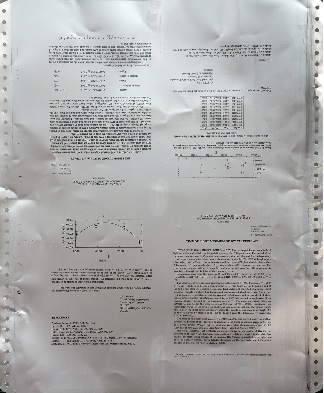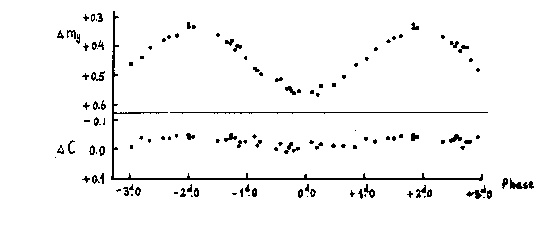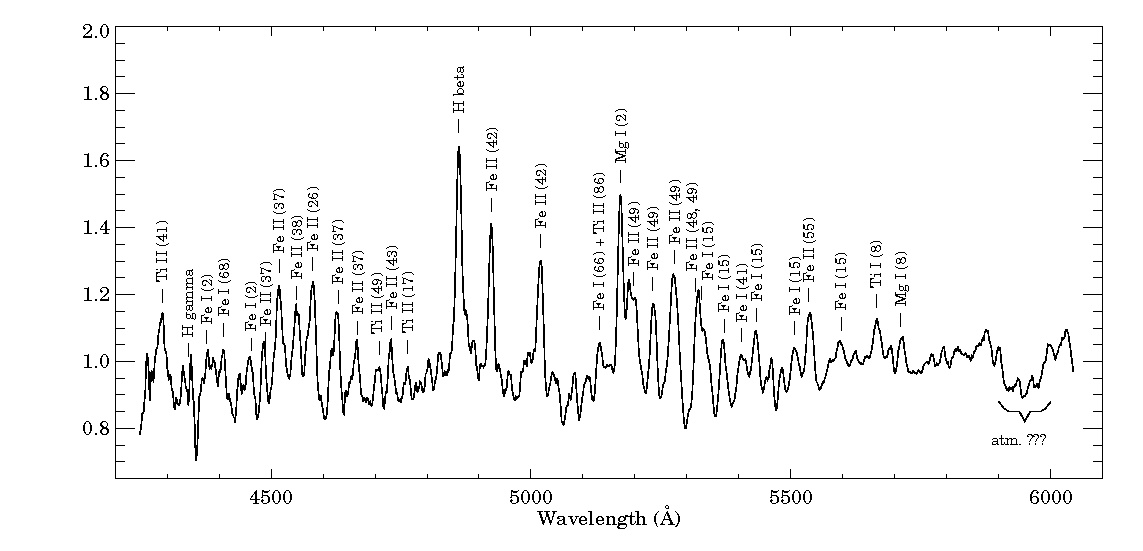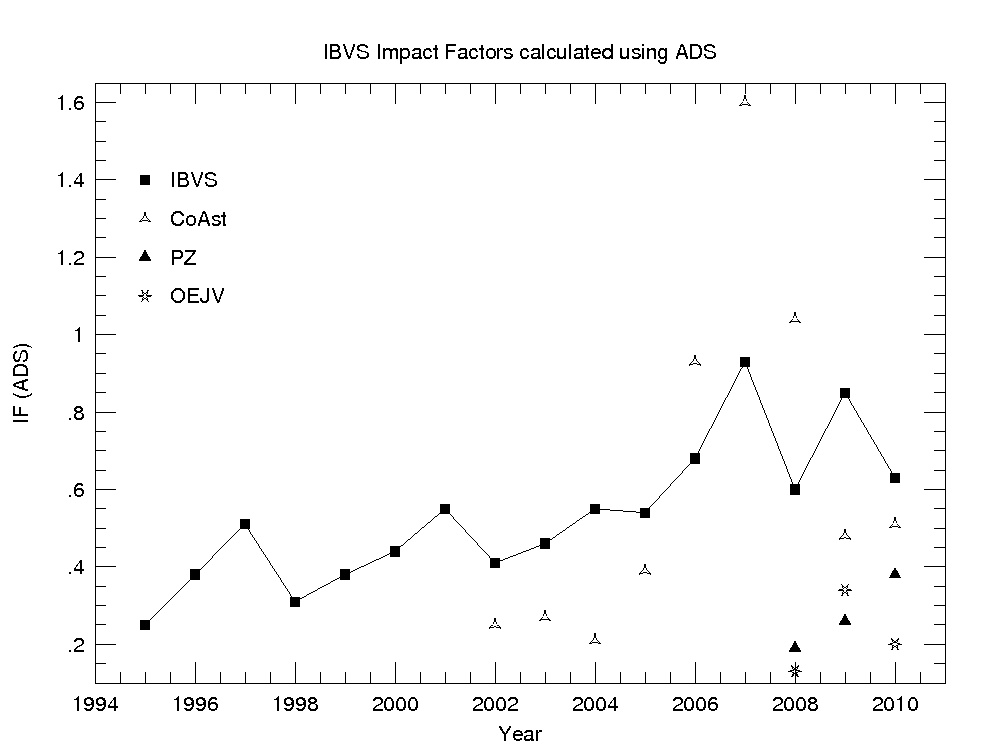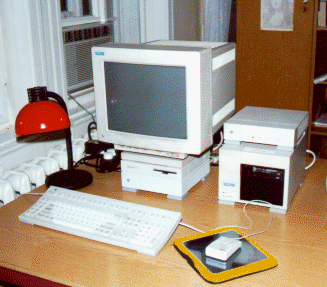INFORMATION BULLETIN ON VARIABLE STARS
| Konkoly Observatory Budapest 28 September 2011 HU ISSN 0374 - 0676 (print) HU ISSN 1587 - 2440 (on-line) |
7 April 2011, Konkoly Observatory
As a young assistant I entered service at the Konkoly Observatory on August 1, 1961, so I was witnessing the birth of the Information Bulletin on Variable Stars.
At the meeting of the IAU Commission 27 (Variable Stars) held during the Berkeley General Assembly in August 1961 the participants expressed their wish for quicker ways of communicating data on newly discovered variables and special phenomena connected with variable stars. After some discussion the meeting decided to establish an Information Bulletin on Variable Stars, and accepted the offer of Prof. L. Detre that the Konkoly Observatory would undertake the editing and publishing of this bulletin. Nevertheless the Commission has followed the fortune of IBVS with keen attention and throughout the years one of the most important functions of the Commission has been the sponsoring of this bulletin.
Originally the IBVS did not intend to be a new journal for articles on variable stars, instead its main purpose was the rapid communication of discoveries, interesting observations, requests for photometric and spectroscopic observations, etc. However, it turned out soon that there was a real need for publishing short notes and results on variable stars of current interest and besides its original aims the IBVS had a journal-like function too. Although the Variable Star Commission brought the IBVS into existence, it has been a forum for the observers of eclipsing binaries too. This policy was always wholeheartedly supported by the members of the IAU Commission 27. About half of the published issues dealt with close binary stars. This fact was de jure acknowledged in 1992, when the IBVS became the official publication of IAU Commission 42 (Close Binary Stars) as well.
From the very beginning speed was essential in editing and publishing the IBVS. The editors strived for promptness of publication which was of importance to authors and readers alike, and much effort was made to maintain the turn-around time of three to four weeks. The co-operation of authors helped, most of the manuscripts were submitted in camera-ready form in the pre-electronic era. Of course, this resulted in non-uniform type setting. Moreover, the printing technique was very poor in the beginning. Usually lengthy tabular material was not accepted and the authors were always asked to be concise and not to exceed the one-two page limit, otherwise promptness would be jeopardized.
The scientific level of the IBVS has always been a vexed question discussed at each meeting of the Variable Star Commission. In order to minimize the duration of the publication process, the majority of the manuscripts submitted for publication have been refereed by the Editors. They have always strived for prompt editorial decisions concerning the acceptance of a paper and have considered the original intention, the rapid communication of vital importance. A formal referee system would have certainly caused undesirable but unavoidable delay. Some measures, however, had to be introduced for the protection of the scientific level of the IBVS. Visual observations impossible to verify were not accepted and in questionable cases an informal referee system was used.
In the meantime the IBVS was entrusted with an important task. During the Prague meeting of Commission 27 (General Assembly in Prague, 1967) a proposal was presented by W.J. Miller that the Moscow bureau for GCVS should modify its procedure of assigning variable star designations: the new variables should be named already before a new Supplement to GCVS was completed and these new designations should be made available for the interested observers. It was suggested that use might be made of the IBVS for this purpose. This notion proved to be a very useful idea: since 1968 the IBVS has regularly published the Name List of Variable Stars.
According to the original intention of the founders the issues of IBVS were mailed, free of charge, to all members of IAU Commissions 27 and 42 and to the astronomical institutes and observatories. At the time of the Berkeley General Assembly in 1961 there were only about 75 commission members, but this number was growing continuously. At the end of the eighties the bulletins were mailed (mostly airmailed) to more than 600 addresses. This proved to be a heavy burden and the financial resources of the Konkoly Observatory did not allow to continue this service. A way out had to be found. In this respect the meeting of the Variable Star Commission during the 1988 General Assembly in Baltimore proved to be crucial. The Commission took in the situation, and the new President of the Commission, M. Breger made serious efforts and gave support to overcome the difficulties.
The meeting of the Variable Star Commission during the Buenos Aires General Assembly in 1991 came to a serious decision. E. Milone suggested that the Commission might wish to appoint an editorial board to assist with the publications of the Bulletin. This motion was seconded and accepted by the members, and the Editors proposed an Editorial Board of L. Balona, M. Breger, M. de Groot, D.S. Hall, R. Koch, J.M. Le Contel, J. Percy, M. Rodono, J. Smak and C. Sterken (chair). The constitution of the Board also reflected the fact that IBVS was co-sponsored by Commission 42. Following the first meeting of the Editorial Board in Vienna, November 1991 a new circulation policy was introduced in 1992. Instead of free circulation, the IBVS could be obtained on a subscription basis for a nominal fee which covered only the mailing cost. This unavoidable measure did not cause any interruption in the publication of the Bulletin: the number of subscribers was around 300 at the beginning. The IAU Executive Committee kindly provided a grant of 1000 US$, a sum that allowed to keep 25 East-European and Asian astronomy libraries on the mailing list for two more years (Fig. 2).
C. Sterken gave enormous help with handling the financial and administrative matters related to the IBVS through the international Working Group "Astronomy Research and Education Support" for five years until the Editors could organize the necessary financial and administrative conditions in Hungary.
In June 1991, shortly after that Note appeared, I carried out an observing run at the High Altitude Research Station Jungfraujoch in Switzerland. As that observatory is located at 3600 m above sea level, the safety rules required every observer to be accompanied by at least one other person. It so happened during this run that I had the company of an amateur astronomer, who drew my attention to the developments at IBVS, and who suggested that perhaps the amateur community should take over the publication of IBVS. I promptly called Michel Breger, who was the President of IAU Commission 27 (of which IBVS was the official publication), and proposed that some actions should immediately be taken to help IBVS to continue its important role as a fast and accurate disseminator of crucial information on variable stars. The two vehicles for such support I envisaged were financial support from IAU (Fig. 2) and other sources, and the creation of an international Editorial Board.
And so it happened: on November 13, 1991, IBVS Editors László Szabados and Katalin Oláh met with Michel Breger, Mart de Groot, Jean-Michel Le Contel and myself at Vienna University Observatory to discuss all aspects of the recovery operation. That kernel of the Board decided to introduce an annual subscription fee (of about 12 EUR) as from 1992 on, while sticking to the free-of-charge 4-pages-per-issue policy.
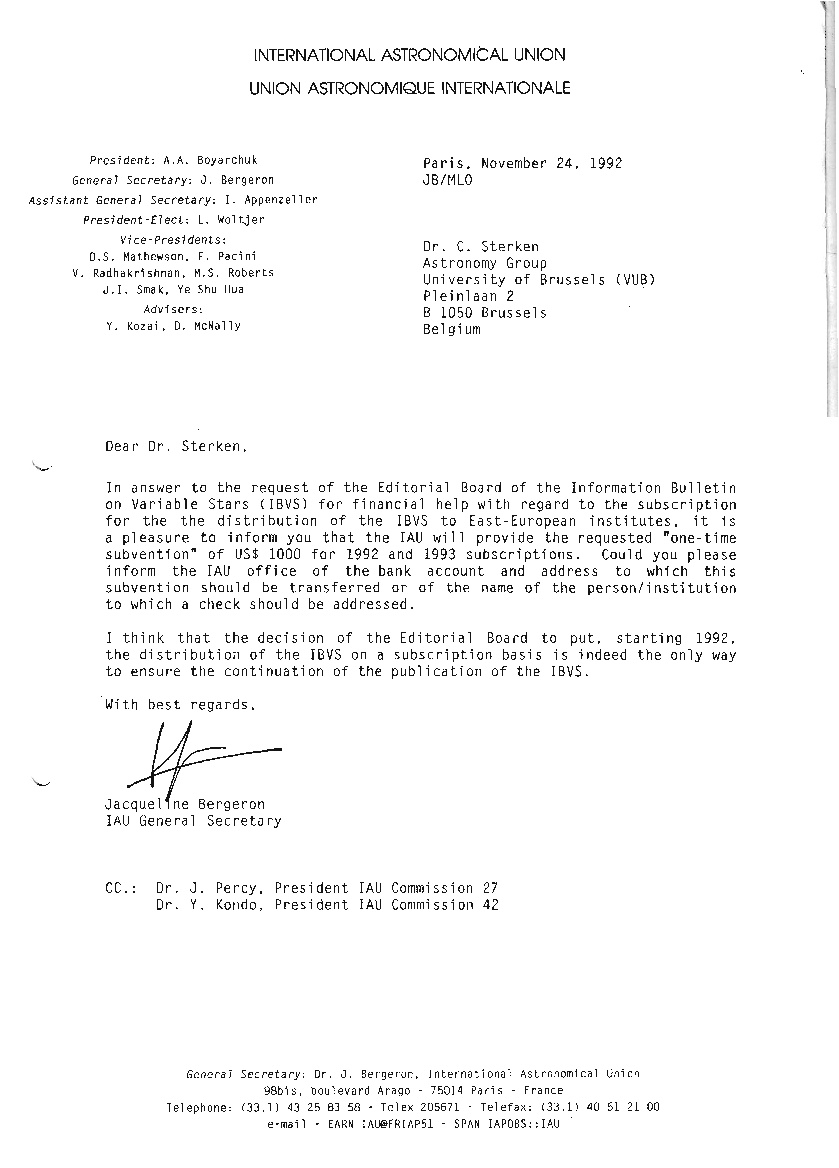
Letter about an IAU grant to help East-European countries to receive IBVS free.
The Business Meeting of Commission 27 at the XXI IAU General Assembly resolved unanimously to set up an Editorial Board to assist Konkoly Observatory with the publication of IBVS. The Board members were L. A. Balona, M. Breger, M. de Groot, D. S. Hall, R. Koch, J.-M. Le Contel, J. R. Percy, M. Rodono, J. Smak, N. Samus and C. Sterken (Chairman), and the Editors L. Szabados and K. Oláh. The task of the Board was to help the Editors in further raising the quality of the Bulletin, specifically by introducing a stricter refereeing policy. This initial Editorial Board remained in function during a full six years, after which its composition was adjusted every three years, i.e., at the pace of the IAU General Assemblies.
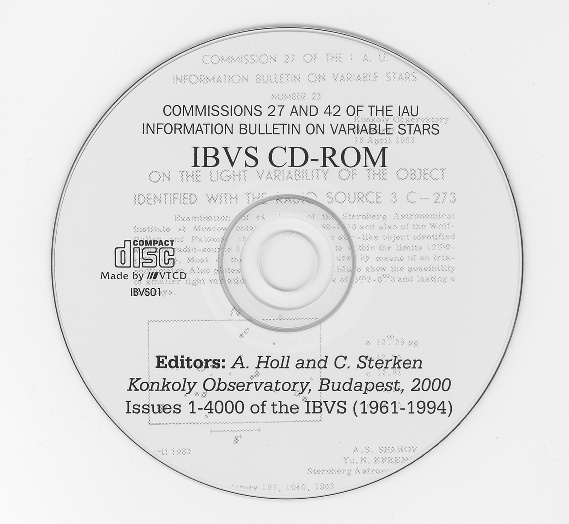
The first IBVS archival CD, published in 2000.
The measure of introducing a subscription price, evidently, slimmed down the list of subscribers: a number of people - mostly inactive retirees - did not renew their subscriptions, but the list of subscribers eventually grew and stabilised with the increasing quality that the Bulletin was offering, not in the least because the financial revenues allowed acquisition of more performant office equipment.
The offset printing was eventually abandoned, and replaced by the much more
economic digital printing, a situation that opened up other perspectives, among
which the creation of a digital archive containing all IBVS issues from number
1 on. Scanning equipment was acquired, and with the help of volunteering
operators, the entire paper archive was scanned and produced on CD-ROM. The
first CD (1961-1994) was published in 2000, the second volume (1994-2000)
appeared one year later (see Fig. 3). The entire archive is now online at
By the time of this writing, the Bulletin is half a century of age, and has
developed into a truly
First of all, here follows the list of the scientific editors of IBVS since the
first to the last printed issue.
![]() konkoly . hu
konkoly . hu
